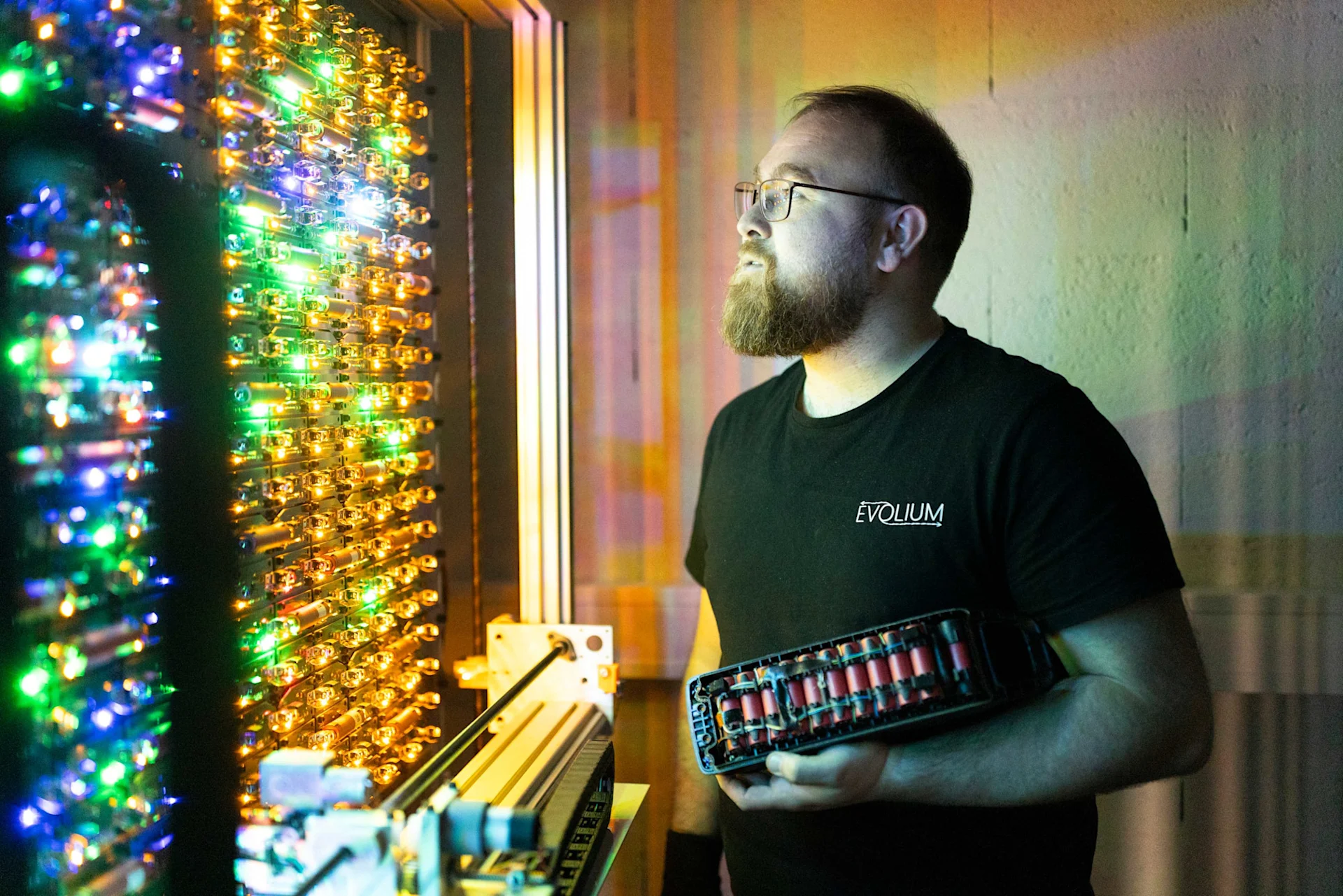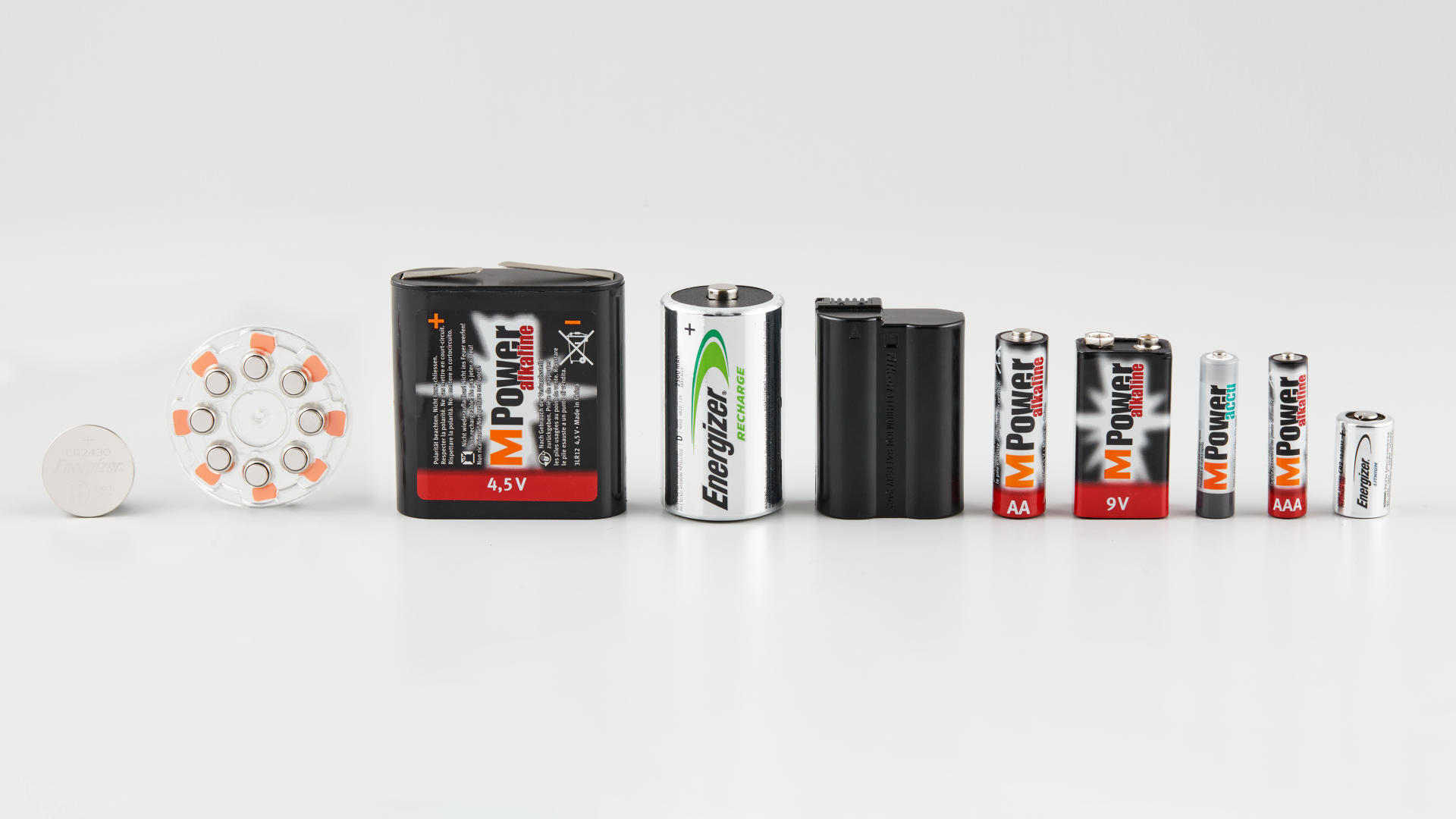
Migros Pioneer Fund
Rechargeable lithium batteries that last longer
With the support of the Migros Pioneer Fund, Evolium Technologies is extending the life of lithium batteries.
navigation

Circular economy
We use them every day, but how much do you really know about batteries? What are they made of? Why can't you put them in the bin? How are they recycled? We have the answers.
"Battery" is a general term for an energy storage device. They contain chemical energy, which can be converted into electrical energy by connecting the battery to a power circuit. This allows devices to be operated without being plugged in to a power outlet. A distinction is made between primary and secondary batteries. Primary batteries are all common batteries than can't be recharged after use and must be disposed of. Secondary batteries are rechargeable batteries, which are energy accumulators.
Classic: Alkaline batteries are the most commonly sold type of battery in Switzerland. They have an iron casing with a zinc-manganese core, and they are long-life batteries, but cannot be recharged. They are commonly used for torches, toys and radios, to name just a few.
Mini: The right choice for extra power. These small, round batteries are known as button cells and can be made of silver oxide, a mixture of zinc and air, or lithium – the lightest metal in the world. They are used for kitchen scales, clocks or hearing aids.
Rechargeable: These ones look like normal alkaline batteries (see above), but are usually a nickel-metal hybrid. They can be recharged with a universal charging device. Unlike the nickel-cadmium rechargeable batteries that came before them, these batteries do not contain any poisonous heavy metals.
Powerful: Lithium-ion batteries have been growing more and more popular over the years. They are ideal for phones, laptops, tablets, electric tools, e-bikes and electric cars because of their high energy density and many charging cycles. They are also used to store energy generated from photovoltaic systems.
Different appliances require different batteries. The cellular composition of the battery affects its performance, capacity and voltage. These differences can also be seen in the price.
"AA" or "AAA" on a battery indicates its size. These two battery sizes are common, with the AA-size meaning a larger battery than the AAA-size.
In Switzerland, used batteries count as hazardous waste and must not be disposed of in household waste. As consumers, we are legally obliged to return them to the point of purchase or a collection point.
Batteries are mostly comprised of recyclable materials. Raw materials such as zinc and ferromanganese, a mixture of iron and manganese, can be recovered in the recycling process and do not have to be mined again. This preserves scarce and valuable resources. Materials that were once in batteries get a second life as shaft covers, hydrants, keys, screws, razor blades or doorhandles. Recycling also protects the environment from heavy metals such as lead and cadmium.
The batteries are sorted manually according to their cellular composition.
Components such as paper or plastic are removed in a 700-degree furnace.
The metal components of the batteries are melted down in a 1500-degree arc furnace. The zinc evaporates, but a condenser turns it back into liquid and it is then moulded into plates. Iron and manganese remain in the melted mass and form ferromanganese. These recovered materials are sold to commodity traders and made into new products.
The leftover cinders in the arc furnace are extracted and used in the fertiliser industry.
There is a disposal fee included in the sales price of batteries. For this reason, no fee is charged at recycling collection points. Inobat collects this fee on behalf of the Swiss Federal Agency for the Environment and uses it to collect, transport and recycle batteries. These fees are also used to fund the "Battery Man" marketing campaign to raise awareness of battery recycling among the Swiss public.
165,000,000 batteries are sold each year in Switzerland. Migros is a market leader in this area.
1 recycling plant for all of Switzerland. Batrec Industrie AG is in Wimmis, Bern. All batteries collected in Switzerland end up here sooner or later.
95 per cent of the materials in a battery can be recycled. The remaining five per cent might be water or plastic bits that evaporate or are incinerated in the furnace.
80 per cent of all batteries sold are recycled.
11,000 collection points exist across Switzerland, including all Migros stores and specialist markets.
300 tonnes of batteries were returned by Migros customers in 2022 and recycled.
Migros sells the most batteries between September and January. The sales figures are especially high in December and January, because so many electronic toys, devices and gadgets under the Christmas tree need batteries of all different types.
Do you know what can go in the bin? With our tips and tricks, recycling not only becomes easy, you also save a lot of waste.